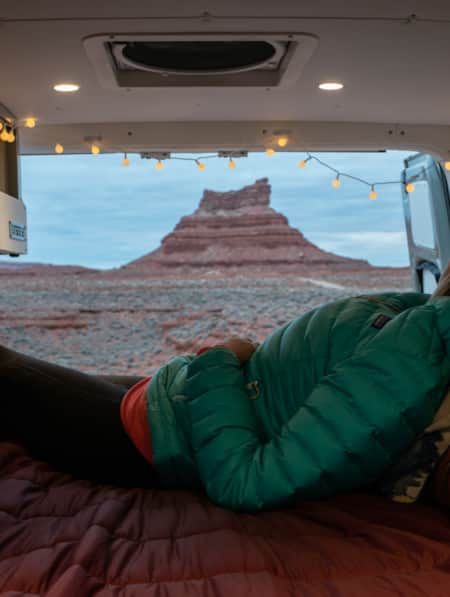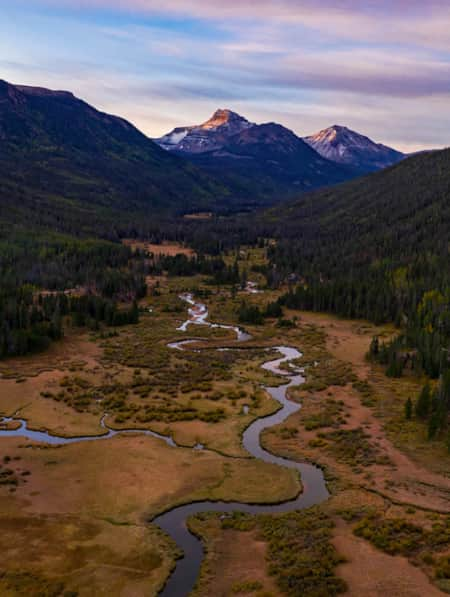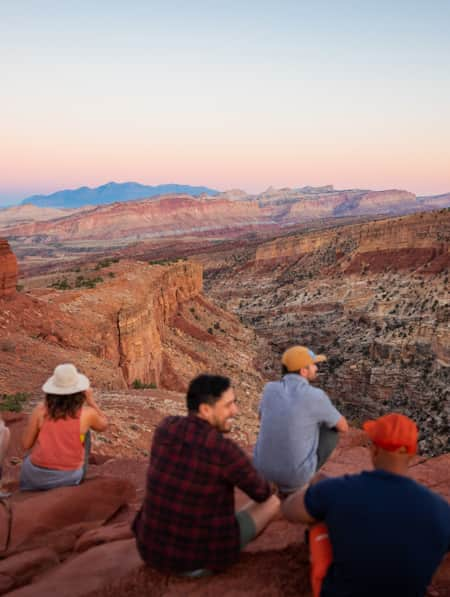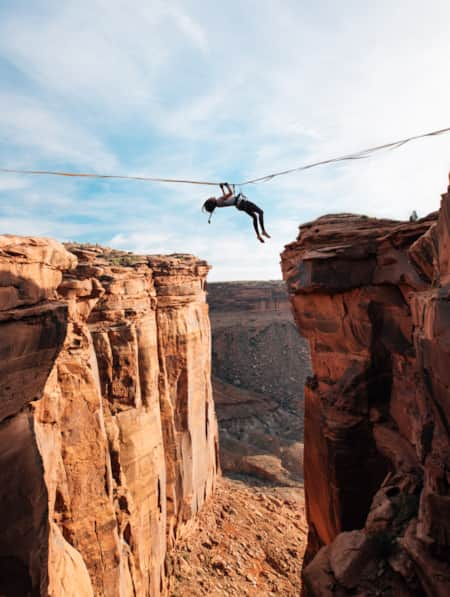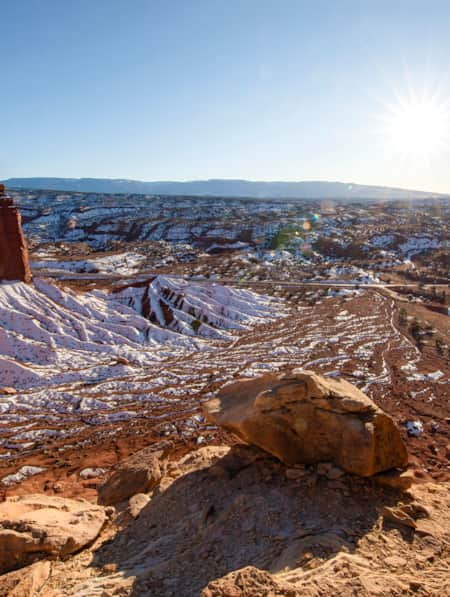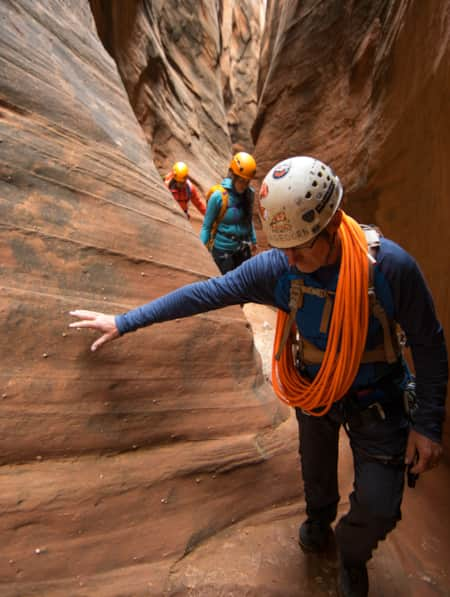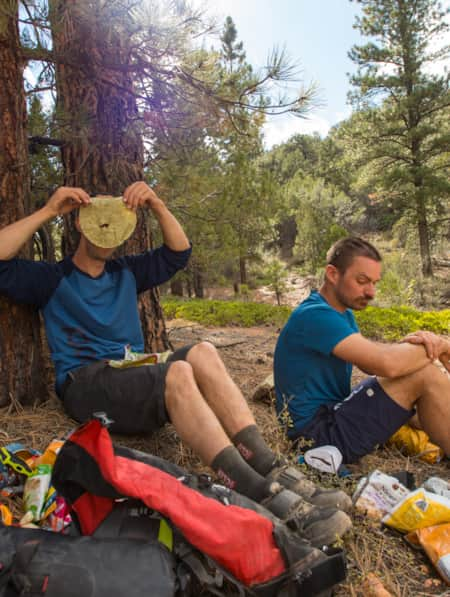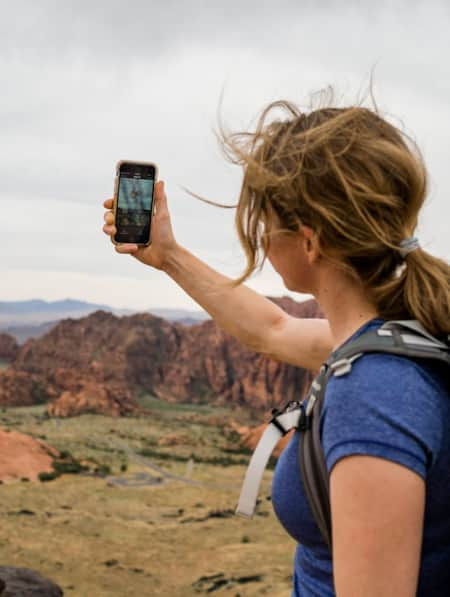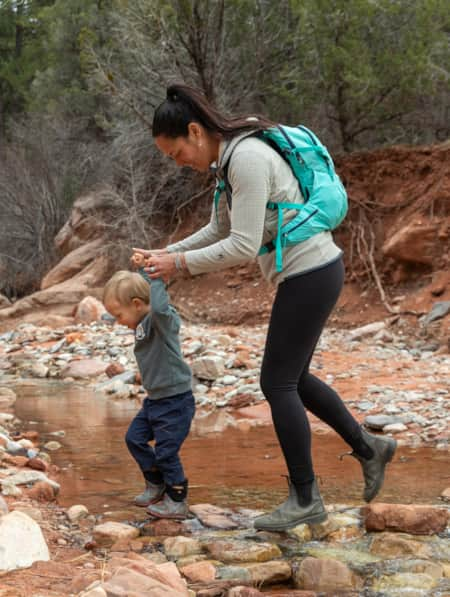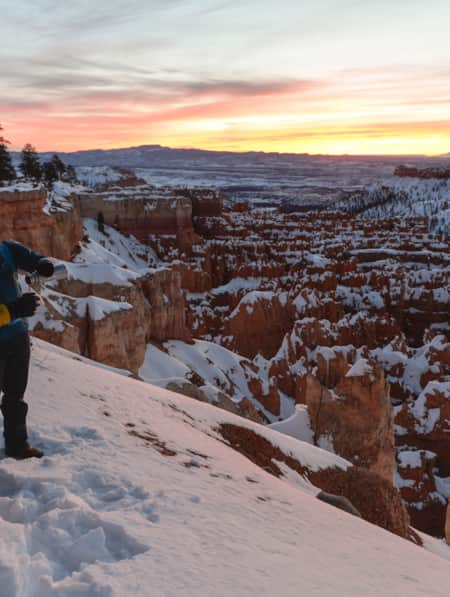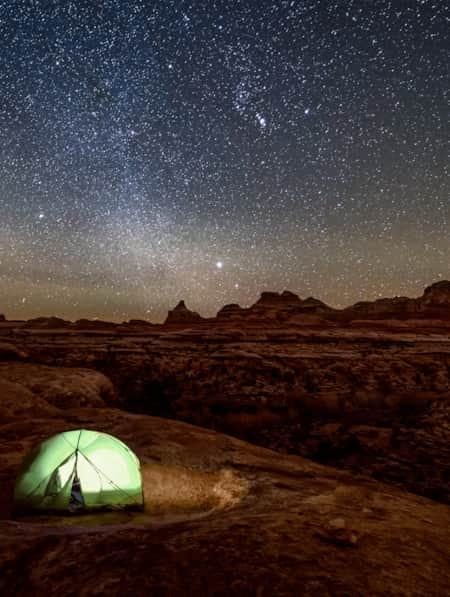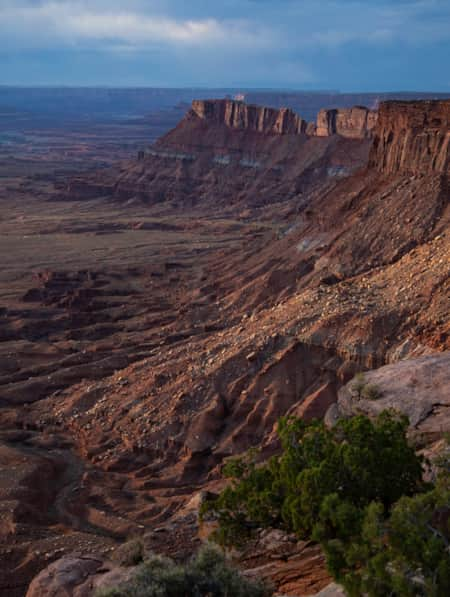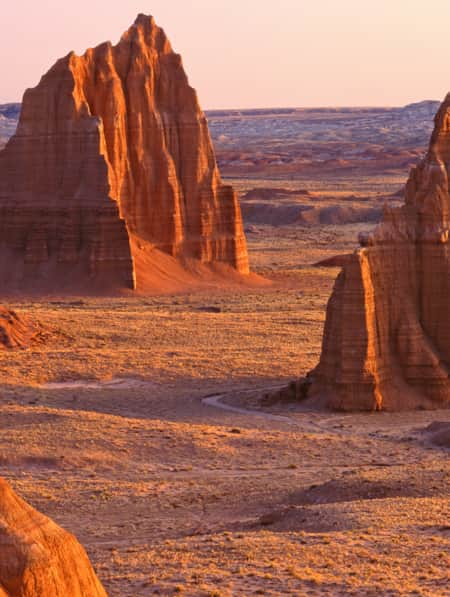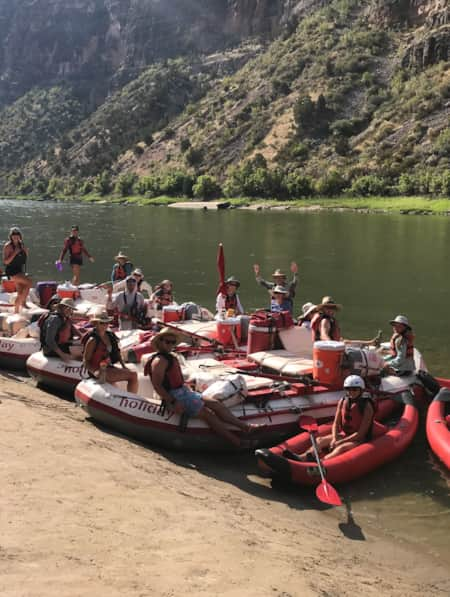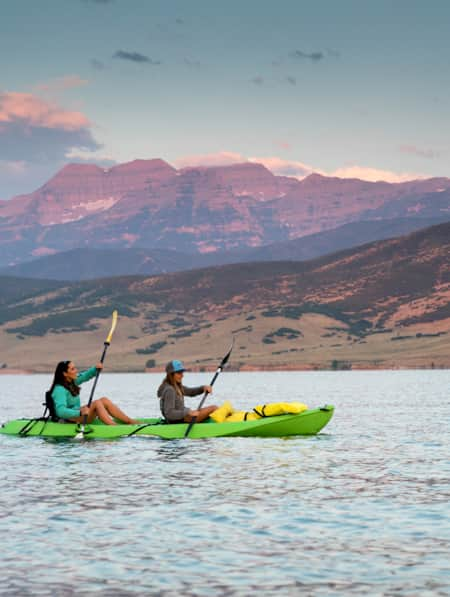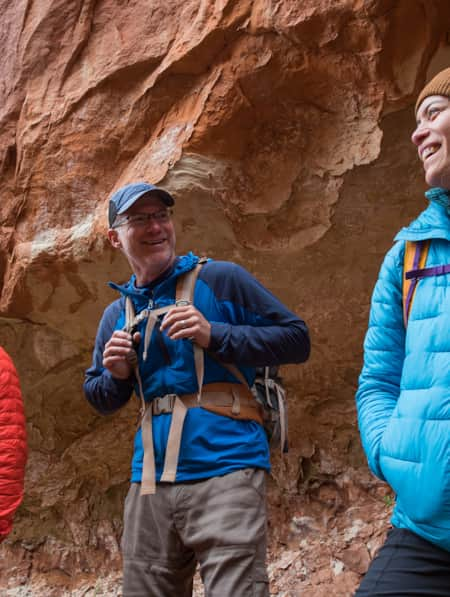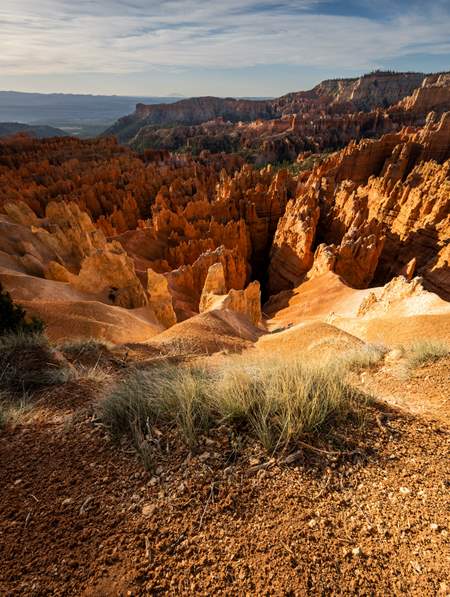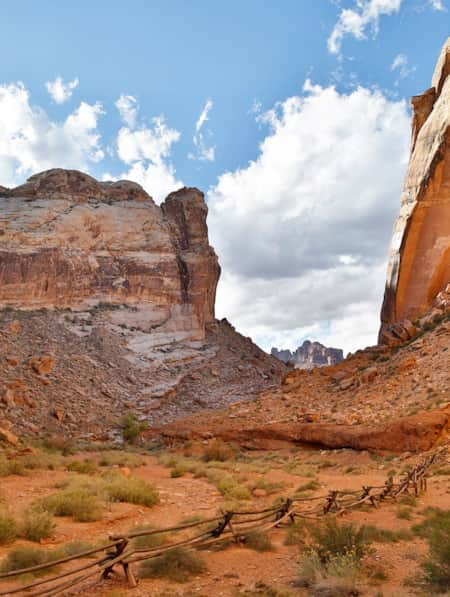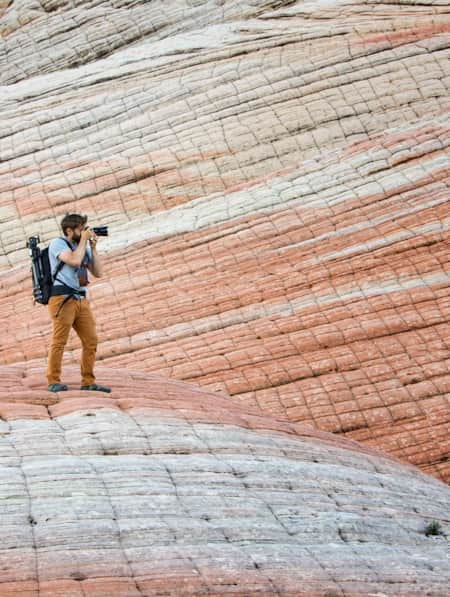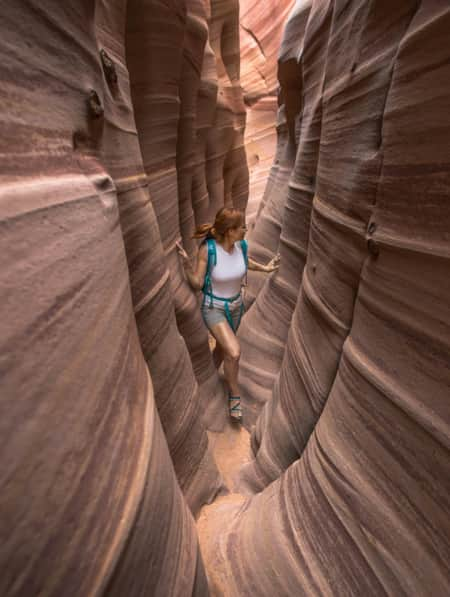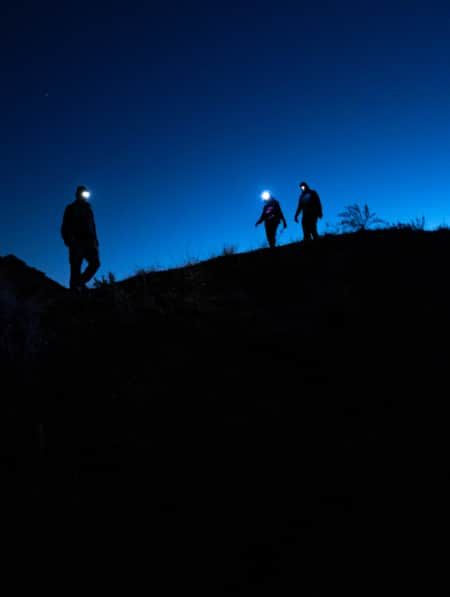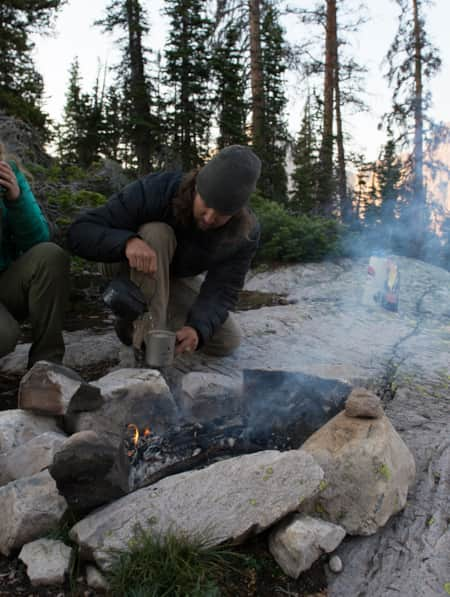- Home
- Plan Your Trip
- Utah Forever
- Utah Flooding Updates & Safety Tips
Utah Flooding Updates & Safety Tips
Mountain snowmelt and spring runoff across the state can increase the potential for flooding, fast moving rivers and debris flows in some areas. But Utah flooding isn’t just a spring concern — monsoon season (typically late summer and early fall) also brings volatile weather events. Know how to stay safe and informed during your trip.
Delays and Closures
Damage from snowpack run-off may require delays in opening gates, temporary road closures and delayed openings of campgrounds, trails and other recreation areas.
Whether exploring the Wasatch Mountains in the north, Moab in the east or Southern Utah, visitors should check ahead with local visitor centers or ranger stations for accessibility.
Flood & River Safety Tips
- Keep children and pets away from swollen rivers and waterways, as very cold and fast flows pose a serious drowning risk.
- Always check the weather forecast for the area you plan to recreate and be aware of changing weather conditions.
- Educate yourself on the terrain you are entering. And be sure to check with the local ranger station for trail conditions.
- If you’re hiking in a stream, be aware of rising water levels or stronger currents and sudden changes in water clarity.
- Do not enter a narrow or slot canyon if storms threaten. Never camp in a wash bottom and recognize that dry washes are a result of previous flash floods.
- Avoid areas already flooded, especially if the water is flowing fast. Do not attempt to cross flowing streams.
- Roads may become impassable, due to wet and muddy conditions. Never drive around the barriers blocking a flooded road.
- Always tell someone exactly where you are going and when you will return.
Flood Alerts
Flash flood conditions change instantly. Areas along Northern Utah’s Wasatch Front continue to manage flooding and canyon landslides, while certain regions in Southern Utah face the risk of flash flooding and unsafe waters.
Know before you go: Responsible travel equals safe travel. Before hitting the trail or starting the drive, use these sites and apps for the most up-to-date information:
National Park Alerts
See alerts and conditions from the National Park Service for Utah’s Mighty 5 — Arches, Bryce Canyon, Canyonlands, Capitol Reef and Zion national parks.
Weather Alerts and Flood Forecasts
Find weather forecasts and flood risks throughout Utah and its neighboring states from the National Weather Service and sign up for Wireless Emergency Alerts.
Forecasts by City:
- Salt Lake City - Find weather and flood alerts for the Wasatch Front
- Ogden - Find weather and flood advisories for Weber River
- Provo - Find weather and flood advisories for Provo River
- Park City - Find weather and flood advisories for the Wasatch Back
- Moab - Find weather and flood advisories for Colorado River, Arches and Canyonlands
- Logan - Find weather and flood advisories for Cache County
- St. George - Find weather and flood advisories for Southern Utah and Zion
Daily Flood Reports
Use the Utah Department of Public Safety’s flood and spring runoff reports to mitigate travel risk.
Current Road Conditions
Discover up-to-date road conditions, closures, traffic and webcams at the Utah Department of Transportation or on the app.
Landslide Information
Turn to Utah Geological Survey for current landslide events in Utah.
State Park Alerts
Read warnings and safety tips for state park travel at Utah State Parks.
"Play it smart, play it safe. Whether driving or walking, any time you come to a flooded road, turn around, don't drown."
– National Weather Service
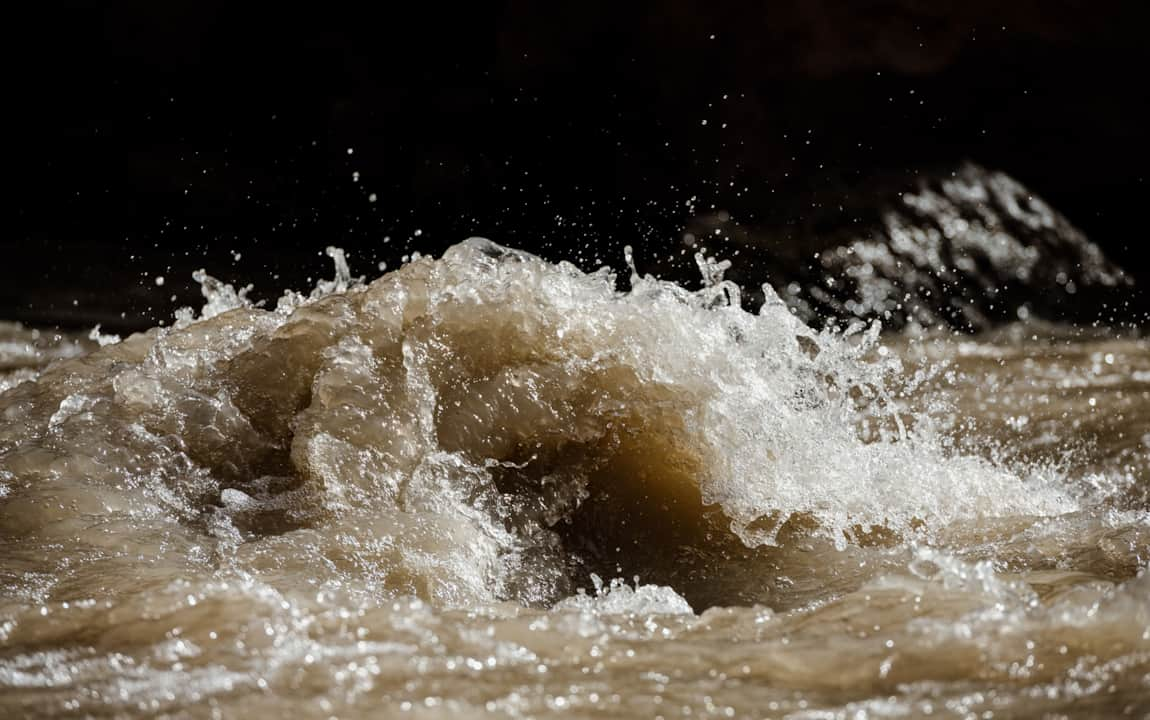
3 Tips During a Flood: Stay Out of Flood Waters
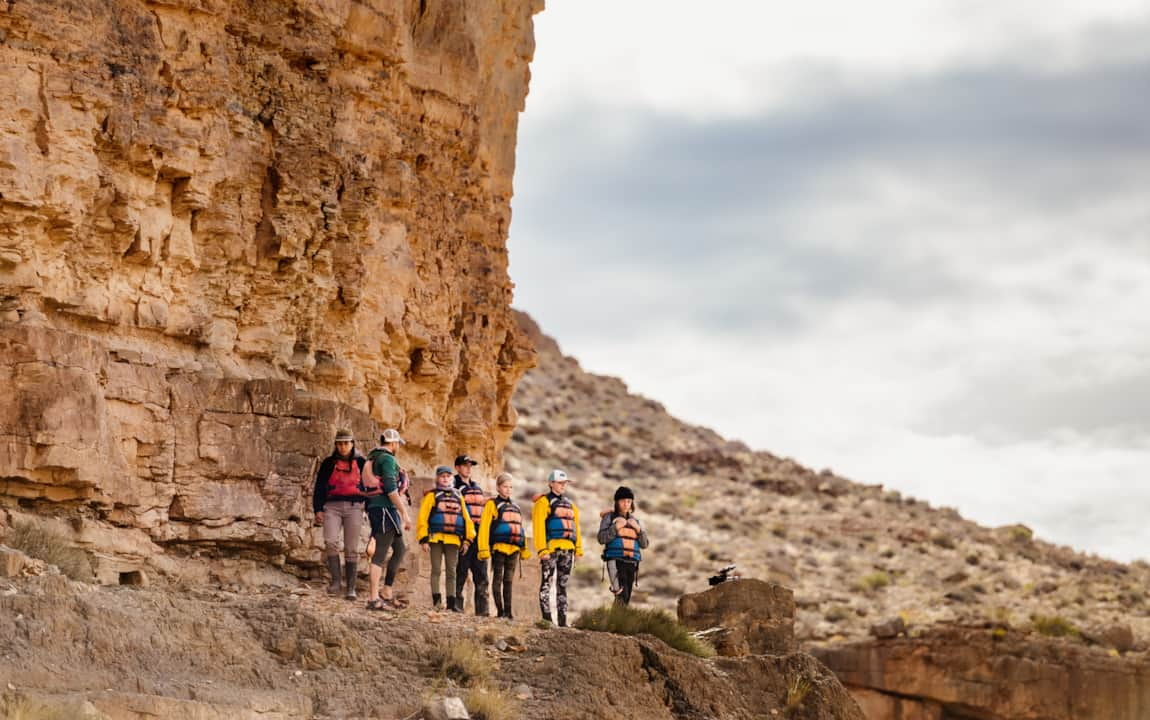
3 Tips During a Flood: Get to Higher Ground
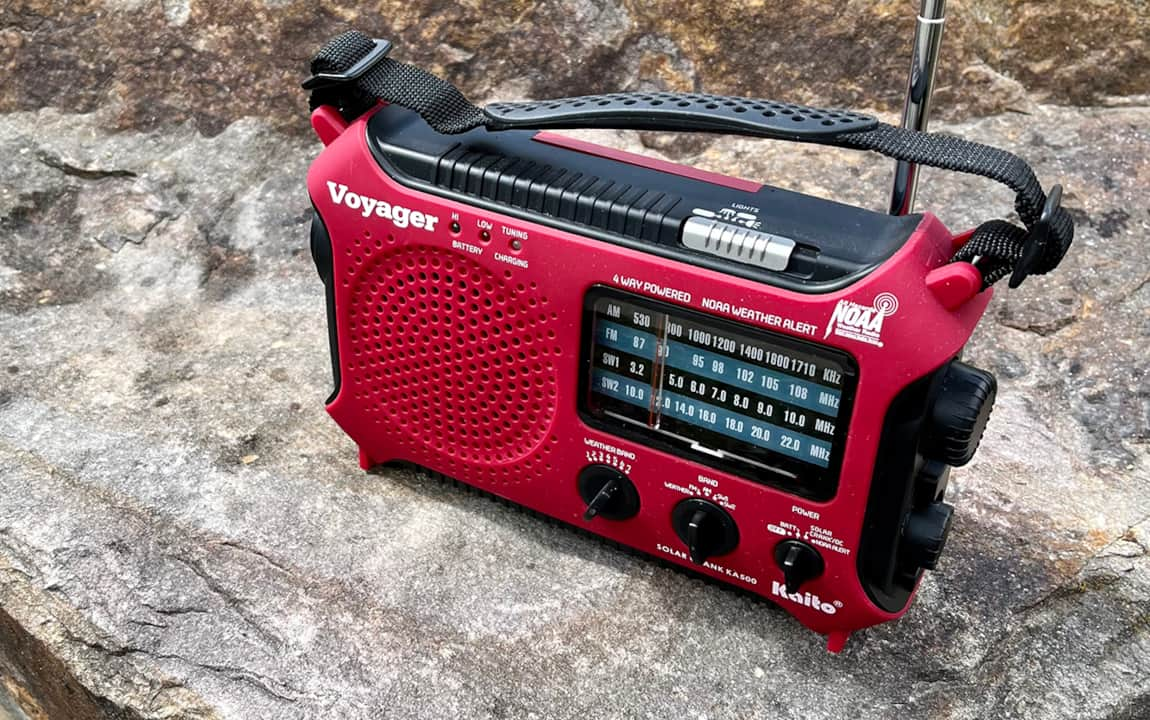
3 Tips During a Flood: Stay Informed
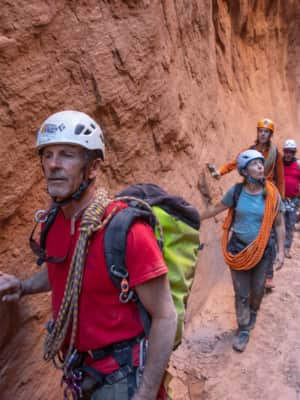
How To Stay Safe in the Outdoors
Written By Ryan Salm
5 minute read
Know how to stay safe and informed during your Utah trip and who is helping when you get into trouble.
Discover More
-

A Van Lifer’s Guide to Responsible Travel in Southern Utah
Written By Kristen Bor
2 minute read
When Utah’s dirt roads are calling you, it’s time to plan your van life road trip. Here’s what you need to know to travel safely, support Utah’s rural communities, and help preserve the delicate desert landscapes.
-

How to Visit Utah’s Most-Visited Forest
Written By Brett Prettyman
The Wasatch Front mountain range offers endless amounts of recreational activity. Learning how to visit responsibly will enhance your overall experience.
-

Planning Ahead for Your Utah Adventure: Outdoors Tips for Three-Season Fun
Written By Austen Diamond
3 minute read
Before you plan your Utah outdoor adventures, check out our guide to proper preparation. You’ll enjoy your action-packed travels even more. Read now!
-

Walking The Line Between Risk and Responsibility
Written By Chelsea Yamase
Why a Hawaii-based highliner and influencer hasn't returned to Utah — yet.
-

A Winter’s Desert: Visiting Southern Utah in the Slow Months
Written By Brinley Froelich
7 minute read
Experiencing the peace of canyon country in the winter is an attraction of its own.
-

What to Wear on a River Rafting Trip
Written By Melissa McGibbon
There are a variety of Utah river trips to be had, from rafting the Green River’s whitewater, to leisurely floating the Colorado. Here's your packing list.
-

How to Canyoneer Safely
Written By Edmund Vallance
Whether you’re a newbie or a seasoned canyoneer, here are six expert tips for your next canyoneering adventure.
-

How to Bikepack: Pro Tips for Planning a Multi-day Backcountry Ride
Written By Kurt Gensheimer
3 minute read
Want to learn how to bikepack? Check out these tips and bikepacking gear list from veteran rider Kurt Gensheimer and plan your own Utah bikepacking trip!
-

Use These Apps to Enhance Your Utah Travel
Written By Kristen Pope
Apps can help you identify wildlife, learn about the night sky, plan your trip, and more. Use these apps to help take your Utah trip to the next level.
-

5 Expert Tips to Prepare for Your Utah National Parks Adventure
Written By Visit Utah
3 minute read
If you’re planning to visit Utah national parks for a hike, learn important tips to maximize your experience and keep you and your family safe.
-

Winter in the Bryce Canyon Area: Hiking, Cross-Country Skiing and Snowmobiling
Written By Jeremy Pugh
4 minute read
Learn more about why Bryce Canyon and the surrounding areas are the perfect place for winter hiking, cross-country skiing and snowmobiling.
-

Backpacking in Canyonlands National Park
Written By Visit Utah
7 minute read
Canyonlands National Park offers a spectrum of backpacking opportunities — from short trips at designated backcountry campsites to longer, adventurous trips that require extensive planning and desert canyon navigational knowledge.
-

Be Prepared for the Southern Utah Backcountry
Written By Kristen Pope
3 minute read
Prepare for a trip out into Utah's rugged red rock backcountry by learning as much as possible about the area before heading out. Stop by a ranger station to educate yourself and pick up necessary permits. Always practice good backcountry ethics and proper safety techniques for a safe and enjoyable adventure.
-

Hiking the Desert in Capitol Reef National Park
Written By Visit Utah
-

5 Reasons to Hire a Guide to Run Utah’s Rivers
Written By Heather May
3 minute read
While we eat and splash in the river to escape the early morning heat, the four guides will wash the dishes, break down camp, load our bags on the rafts and discretely stow the toilet.
-

How to Slow Travel in Utah
Written By Elainna Ciaramella
Avoid the mad scramble and consider slow travel as a better approach to your Utah trip.
-

The Complete Winter Camping Packing List for Staying Warm in Southern Utah
Written By Jeremy Pugh
For most travelers, Southern Utah winters prevent comfortable camping, and occasional snowfall can make outdoor adventure a little more challenging. With a little extra planning, good layers, and the right equipment, however, you can enjoy Utah's national parks in the solitude of winter.
-

How to Visit Utah's National Parks
Written By Ryan Coons
3 minute read
Use these tips to make the most of your trip to Utah’s national parks and monuments.
-

How to Camp on Utah’s BLM Lands
Written By Sara Hobbs
Read these insights and tips gathered from a novice’s first-ever camping trip on BLM and public lands to gain the confidence you need to recreate happily and respectfully on Utah’s public lands.
-

A Photographer’s Guide to Mindful Travel
Written By Kristen Pope
Utah's deserts are a photographer's dream, yet very fragile. Find out how photographers can take a few simple steps to care for this unique environment.
-

How to Stay Safe and Stoked as a Solo Woman Traveler
Written By Elisabeth Brentano
3 minute read
Tips to help keep solo women travelers safe on road trips and outdoor adventures in Utah and beyond. From a gear checklist to suggestions about where to camp and how to handle stressful situations, writer and photographer Elisabeth Brentano shares her experiences.
-

You're Inspired to Go Off the Beaten Path. Now What?
Written By Elainna Ciaramella
Here’s how to navigate Utah's backcountry safely.
-

Hiking Southern Utah with Younger Children: Tips for Family Friendly Adventure
Find safety tips, side activities and kid-friendly hikes in Utah with our special guide to hiking Southern Utah with children. Read now!
-

How to Backcountry Camp Responsibly
Written By Arianna Rees
Four tips on how to camp more thoughtfully and responsibly in Utah's backcountry.
-

Powder Pups to the Rescue
Written By Austen Diamond
5 minute read
Four furry friends help the Solitude Ski Patrol do their duties.
